#Nicholas Cusanus
Explore tagged Tumblr posts
Note
Do you think it would be possible for an Evangelical or Pentacostal church to enter full communion with Rome (presuming that their pastors would get ordained etc) while keeping most of its current liturgy?
I haven't really been to any Protestant services of a low church persuasion before, so I don't think I can competently comment on it. But in principle, I don't see why not.
In Allatae sunt, Pope Benedict XIV says that when groups of "schismatics" return to the Catholic Church, they should not be expected to give up their liturgical traditions. "[The Church's] great desire is [...] in short, that all may be Catholic rather than all become Latin." Now, this was written with the Orthodox Churches in mind. But I don't see why this would ipso facto mean that it couldn't also be applied to groups born of the Protestant Reformation.
Now, Anglican Ordinariate communities are technically Roman Rite Catholics, but their breviary and missal might bring something to the conversation, too. Namely, as their website says, Divine Worship: The Missal is a very unique Catholic liturgical text in that it "marks the first time the Catholic Church has sanctioned liturgical texts deriving from the Protestant Reformation." And if it's happened once, well, I don't see why it can't happen again. I would imagine that any explicitly anti-Catholic or overtly Calvinistic language would need to be expunged, and the Communion prayer would need to incorporate the Epiclesis and Words of Institution, at minimum.
Based off of these two principles, I don't think it's necessary impossible for what you're suggesting to come to pass. I think these rites would potentially look radically different from the current 24 rites of the Catholic Church, but as early as the 1450s, Cardinal Nicholas of Cusa was making suggestions for incorporating religious traditions that would have looked radically different from the Catholic rites prominent in his own time.
But I wonder if someone has actually talked about this possibility in a way that was publishable in an academic environment?
#asks#Christianity#Catholicism#ecumenicism#Allatae sunt#Pope Benedict XIV#Evangelical Christianity#liturgy#Ordinariate#Nicholas Cusanus#Protestant Reformation
7 notes
·
View notes
Text
What would have happened if what lived in the hearts of the greatest individuals – Nicolaus Cusanus, Paracelsus, Agrippa, Giordano Bruno, and Campanella – would have entered the hearts of everyone? […] What if the old and the new had met and intermingled, spirit with blood, and blood with spirit?
— Gustav Landauer, Revolution and Other Writings: A Political Reader, transl Gabriel Kuhn, (2010)
#German#Gustav Landauer#Revolution and Other Writings: A Political Reader#Gabriel Kuhn#(2010)#Nicolaus Cusanus#Nicholas of Cusa#Paracelsus#Heinrich Cornelius Agrippa#Giordano Bruno#Tommaso Campanella#What if? What if? What if...
24 notes
·
View notes
Text
Cusanus’ Cosmological Contributions
Some time ago I explored the notion of Creatio Ex Vetere in relation to M theory and the idea that creation, or the Big Bang, may not simply start from nothing but from a pre-existing matrix that has been redesigned. Our emerging cosmology seems to indicate that there is an amazing dynamism, a relational ongoing process to creation and to us creatures by design that many of our theological notions based on a simply ex nihilo cosmology does not hold up.
At the same time, many other theological constructs appeared overly mystical because it did not connect with our antiquated cosmology. Now we can find that some theological concepts does coincide with the cosmology where creation continues through a process of reinventing itself. Obviously process theology communicates well with this cosmology but other ideas like deification (theosis), participationist soteriology (synergy) and divine encounter (theophany) connects quite well to our emerging cosmological reality.
The Eastern Orthodox tradition is steeped in these theological traditions but we also find some early western theologians who also considered these notions. I have looked over some of these traditions in another post. I discovered however that some in the west did formulate these notions later in our western tradition, one such person was Nicholas of Cusa. An early 15th century bishop, mathematician, and mystic Nicholas had diplomatic relations with members of the Orthodox Church during the conciliar movement that healed the Great Western Schism.
I am reading Nancy Hudson’s book “Becoming God: the Doctrine of Theosis in Nicholas of Cusa” which is deeply interesting and eye opening. Part of Cusanus’ (as he is called in the book) notion is that God can be best comprehended through paradoxical statements. Appreciating both an apophatic and cataphatic (although the initial approach for Nicholas is apophatic, the negative way) approach Cusanus is drawn to the world of paradox of opposites to enter into the transcendent wisdom that is the source of all being. He articulates this paradox in his own cosmological comprehension whereby all opposites are reconciled including possibilities and actuality. This then defines his cosmological process.

The following quote from Cusanus describes this. It is a complicated statement but pour over it a bit. Not only can you appreciate what it says to describe the creative process but also consider how it embraces the language of quantum mechanics so well.
Absolute possibility is not able to exist prior to actuality - unlike the case where we say that some particular possibility precedes its actualization. For how would absolute possibility have become actual except through actuality? For if the possibility-of-being-made made itself actually exist, it would actually exist before it actually existed. Therefore, absolute possibility, about which we are speaking and through which those things that actually exist are able to actually exist, does not precede actuality. Nor does it succeed actuality; for how would actuality be able to exist if possibility did not exist? Therefore, absolute possibility, actuality, and the union of the two are coeternal. They are not more than one eternal thing; rather, they are eternal in such a way that they are Eternity itself. (Hudson, pg. 63)
Evidently Cusanus developed a term to describe the process of enfolding in “actualized-possibility” which he calls possest. God both transcends and exist within creation so that creation can participate with God in the ongoing process of being reconciled with God.
Nicholas de Cusa believes in deification, the divine redemption of our humanity as it enters a mystical union with God. There are many implications on Cusanus’ cosmology based on this process of creation. One amazing insight that again relates with our current knowledge of the deeply interconnected universe is how we are all indeed interconnected through the divine principle that resides in creation. Hudson grabs on the phrase “each thing is in each thing” to highlight this notion and cites the following (admittedly convuluted) passage from Cusanus.
The universe, as most perfect, has preceded all things in the order of nature, as it were, so that it could be in each thing. In each creature, the universe is the creature, and each receives all things in such a way that in each thing all are contractedly this thing. …if therefore, all things are in all things, all things are seen to precede each thing. All things, therefore, are not many things, since plurality does not precede each thing. (Hudson, pg. 75)
Cusanus’ theological cosmology has much to offer us as the physicists community unravel a universe that relates well to some of these concepts. A case in point is the notion in physics euphemistically called the God particle. So far physicists are exploring a particle that unites and informs the matter in our universe and the Higgs-Boson particle has emerged as a contender for this role. The idea from deification theology is that we are all interconnected with God and that there is a God particle in all of us which Jesus awakens through his own divine contribution. Cusanus identities Jesus as the contracted maximum, a contracted state where the divine Word resides perfectly and can disclose and awaken the divinity within us all. The use of the word contracted is interesting and Hudson goes on to describe it as such.
Contraction is the delimitation of a universal to a particular in order for it to be a thing. …Because contraction entails restriction in space and time, it is utterly ruled out in the case of the infinite God. …In the hypostatic union, the Word that is equality of being all things is contracted. In flesh and blood, time and space, the Form of forms, the Exemplar of all things is made concrete. (Hudson, pg. 148-150)
This is a curious Christology based on the notion the God resides within creation (immanence) and exists beyond it (transcendence). In true Chalcedon formula Jesus becomes the bridge that connects these two approaches. Cusanus believes that reason, our intellect, is the divine gift that allows us to participate with God. Hudson quotes Cusanus description below.
Further, if in this life every rational nature turns to Christ …it is United, while the personal truth of each nature remains. …Consequently, each of the blessed, while the truth of each’s being is preserved, exists in Christ Jesus as Christ and through him in God as God, and God, remaining the absolute maximum, exists in Christ Jesus as Jesus and through him in all things as all things. (Hudson, pg. 153)
Cusanus has the higher seeking intellect functioning on the human side in the deification process. It should be noted that the search for God does not pretend to reach the heights of divine knowledge, one should never contemplate such hubris. However to attempt to seek divine wisdom should be rewarded because it exercises our limited human intellect to actualize the divine will within creation. This is the realm of participationist soteriology which is found both in eastern and western Christianity. That we participate with God, as co-workers to assist in the plan of redeeming creation. The Orthodox community uses the word synergy to denote this participationist activity. One curious qualifier is that we should not assume a 50/50 participation. Synergy participation is more like 99.9% divine grace and .1% our meager activity, our good works that are consistent with the virtues of grace. That .1% may not seem like much, but for God that .1% is very meaningful.
Where I part with Cusanus is his emphasis on the intellect as the source of our participation with deification and soteriology. I entertain the idea that such connection resides in our conscious state and that it interplays with our moral conscience through the particle that the medieval scholastics called synderesis. A divine spark within us all that informs us of what is universally right and wrong. A God particle that allows us to recognize the actual good rather than our own subjective good. A resource within the conscience that is oriented towards charity and justice as architectonic virtues. If our consciousness has the ability to transcend our mortality then I would like to suggest that such a spark of divine formation may instruct our moral conscience and inform our eternal consciousness.
I am drawn to this by the basic biblical definition that presents God as love. God is intensely relational and through God we are drawn to express that love to one another through caritas et justicia. I side with the scholastics over the nominalists in believing that our God-given conscience is the source of our divinity and I am inclined to accept the synderesis as the unifying principle for deification. This would offer a better connection Christologically as it would look at Christ as the perfect moral exemplar for us in his role as contracted maximum.
But the intellect, our ability to reason and understand, is actively involved with this moral principle in a similar way that Cusanus suggests. Our Conscience exists within our ability to reason and they form our conscious self throughout our lived experience. Our intellect however is bound within our own physiology, it functions through the operation of our brain whereas the synderesis transcends our physiological structures. But our intellect is grounded in the basic truths of our limited existence so for us to grasp the “natural law” (what Cusanus calls the truth of the contracted world) it requires the synderesis to help grasp these truths as Hudson explains below.
The contracted world has its own truth, a truth that is not comprehended in itself by the limited and imperfect intellect. The problem is that the intellect and knowable things are both contracted, and one contracted thing cannot encompass another. The intellect power to see the truth itself, apart from all figuration, symbolism, and contraction, is the perfection and deification of the intellect, something that will occur in the next life. (Hudson, pg. 172)
She goes on to say,
The intellect’s natural desire to master the truth, to have universal knowledge, drives it to look beyond the world of particulars. Divine sonship is the possession of universal knowledge, “when the intellect finds itself to be in the realm where the Master of all workable works is, namely the Son of God, that Word through which the heavens and every creature were formed. (Hudson, pg. 177).
The truths of the contracted world are indeed what we call the “natural law” which are our truths as they reflect the eternal law that is beyond our comprehension. Because we are limited in our particular existence the natural law is difficult to grasp outside of the synderesis, difficult, but not impossible. Through the use of this moral lens we can discovered our truths although we are often limited to figurations and symbolism. That is why Jesus taught in parables, to allow us to grasp these truths in the only way we could. In a similar way theoretical physics often uses metaphors and images to help convey concepts that are beyond our understanding.
All this to say that theological concepts have a role to play with theoretical physics where both disciplines can complement one another. Nicholas de Cusa offers some interesting language that allows the theological community to re-emphasize certain concepts that coincide with our cosmological relationships. The emerging cosmology demonstrates an amazing interconnected dynamism governed by probable determinism. There is little evidence of a cosmology that can emerge from nothingness. All evidence suggests that some type of preexisting matrix existed before our own known universe. Nicholas de Cusa presents us with a tradition of creatio ex vetere that coincides with our own emerging cosmology and which connects with the traditional Christian concepts of deification and participationist soteriology.

0 notes
Text
The Intoxication of Mythology (an Add!)
“Living with these things all the time, I can see how there are certain universal patterns for these manifestations. A shaman among the Navajo or in the Congo will say things that sound remarkably similar to those of Nicholas Cusanus, Thomas Aquinas, or C. G. Jung, leading one to realise that these ranges of experiences are common to the human race. There are some people who close themselves away…

View On WordPress
0 notes
Text
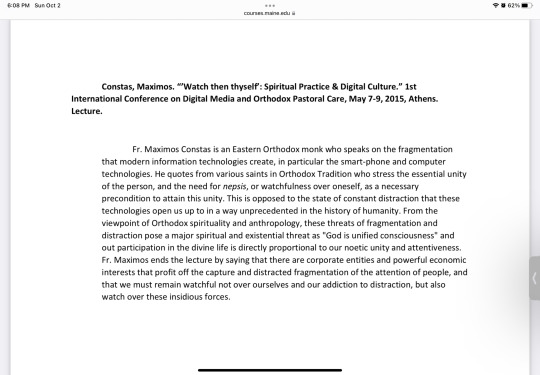
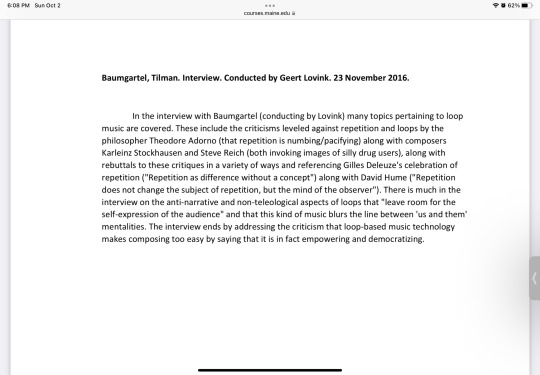
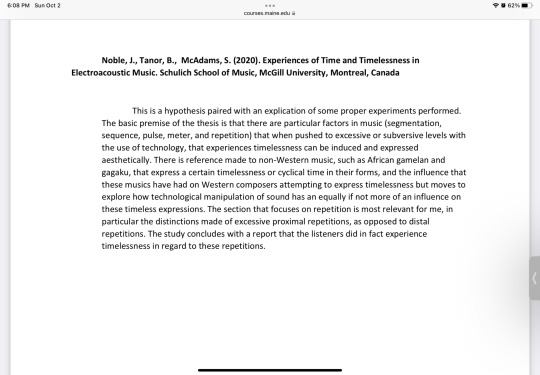
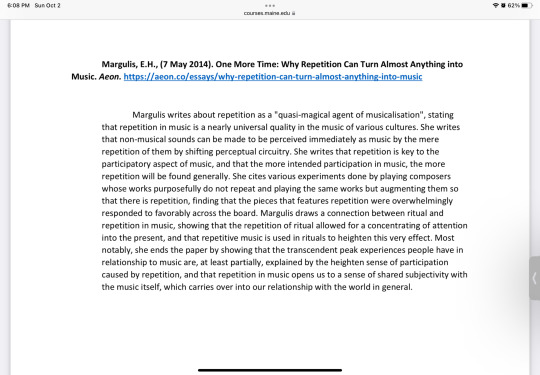
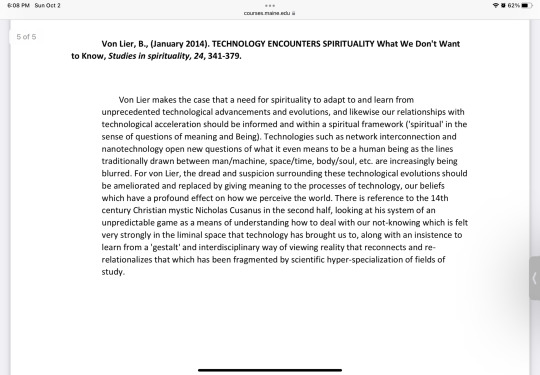
Annotated Bibliography #1
#orthodox#monk#Nicholas Cusanus#spirituality#tape loops#loops#deleuze#adorno#david hume#magical#transcendence#unityconsciousness#future#religion#academic research#writing ideas
0 notes
Note
Hey 👋🏻 I would like to ask number 19, 21 and 25 from your latest history ask game. :-)
Thank you! :D Here you go:
19. Which historical kingmaker / hand behind the throne kinda person would you gladly be a puppet of?
Really? None at all. They inevitably fall out of favour at some point and being too closely associated with them might prove disadvantageous at best, and deadly at worst. I will say however that I whole-heartedly agree with Richelieu's opinion on cats.
21. How good are you at remembering names and dates?
There's this expectation for those who study/studied/work in (a field related to) history that you'll be able to know *all* the names and dates in the world off the top of your head.
The thing is that learning dates by heart isn't as important as many people would expect as you can look those up online or in a book most of the time.
Personally, I'd say I am quite decent at remembering historical names and dates, which however is not the case in my daily life. I am very bad at remembering e.g. the birthdays of living persons around me, but give me a historical figure I've spent some time studying and I'll know their birthday, day of baptism, wedding anniversary, the day they died and when they were buried off the top of my head. Apparently my brain's memory function only works when the people in question have been dead for a couple of centuries. :-)
25. The topic/title of your last History paper?
Thomas Livingstone! A participant of the Council of Basle (1431–1449), and the first Scottish clergyman to attend. Although only a minor figure, he was a rather interesting person. Presumably the illegitimate son of a nobleman, Thomas rose to become an advisor to King James II of Scotland and was close with his much more well-known contemporary, Nicholas of Cusa (Nikolaus von Kues; Cusanus). His illustrious connections did however not save him from financial concerns later in life, and he had to legally fight to reclaim an in commendam (a type of benefice) granted to him by Pope Nicholas V that was taken from him again and redistributed to another clergyman under Calixt III. His legal battle against the guy who was given the in commendam in his stead is rather interesting as the affair spans the (albeit rather short) lives of several popes. Sadly, Thomas didn't live to see the conclusion of his legal battle; Pope Pius II however posthumously ruled that Thomas had been in the right, and ordered all papal paperwork regarding the case to be altered accordingly. Why Pius II acted shortly after Thomas' death remains unclear; it is possible though that his friend Nicholas of Cusa, an influential cardinal, may have spoken to the Pope on his behalf in order to set the record straight for posterity.
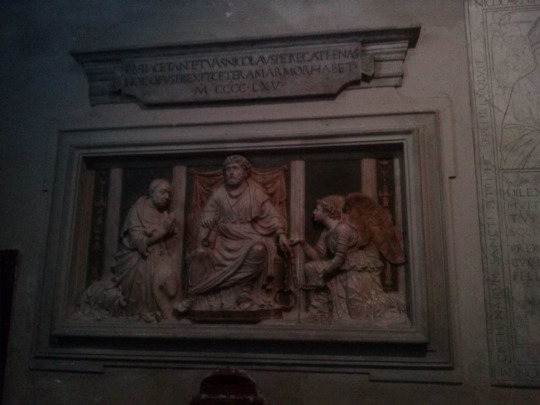

...I haven't been to any of the now fairly obscure Scottish churches (which definitively wasn't the case at the time!) and monasteries I researched, but here are two pictures of the memorial of Nicholas of Cusa, Thomas Livingstone's close friend since their student days at the university of Cologne.
#ask game#ask response#nordleuchten#r replies#history#what we do in the shadows (of the library)#thomas livingstone#nicholas of cusa#nikolaus von kues#cusanus
1 note
·
View note
Quote
the ultimate and deepest contemplation of God is boundless, infinite, and in excess of every concept. For, assuredly, every thing of which there is a concept is encompassed by [that] concept. But God exceeds all this. For the concept of God is [an absolute] Concept, or an absolute Word, which enfolds within itself everything which can be conceived; but it is not conceivable in anything else.
Nicholas of Cusa, Trialogus De Possest, n. 40
#Nicholas of Cusa#Cusanus#Nikolaus von Kues#Trialogus#Possest#Mystic#Philosophy#Theology#God#Panentheism
21 notes
·
View notes
Text
[6.10.1] Cusanus, Nicolaus on God, Universe, Christ, and Human Being
Nicholas of Cusa (Nikolaus Cryfftz or Krebs in German, then Nicolaus Cusanus in Latin, 1401-1464) “Christian Neoplatonic framework to construct his own synthesis of inherited ideas”. Cusanus addresses the four categorical realities traditionally found in Christian thought: God, the natural universe, Christ and human beings. God is absolute and maximum. The following OntoUML diagram shows…
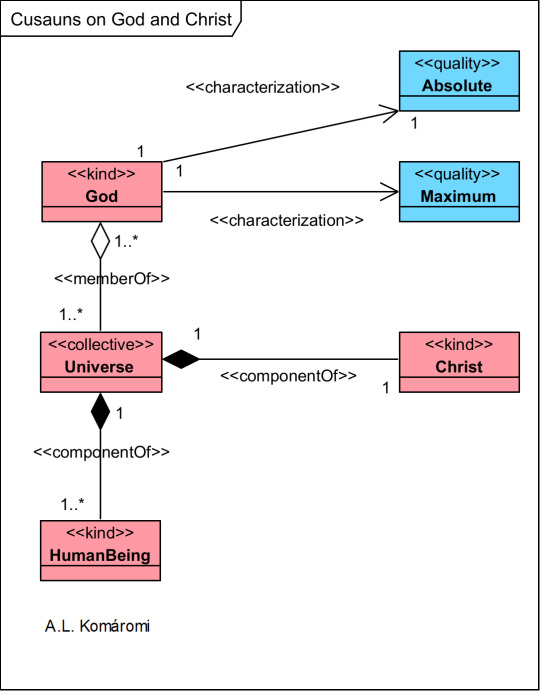
View On WordPress
0 notes
Photo





By Jean Marie Carey
Guido Ascanio Sforza di Santa Fiora was born 26 November 1518 in Rome. In addition to being born into the Milanese dynasty (which had begun fading by the beginning of the 16th Century) he was also the son of Costanza Farnese and therefore grandson of Pope Paul III, brother of Cardinal Alessandro Sforza (1565), uncle of Cardinal Francesco Sforza and great-uncle of Cardinal Federico Sforza (1645). During his time as a cardinal he served as legate as well as administrator of different towns and episcopal sees.
His ecclesiastical career started very early with his selection as Bishop of Viterbo, Acquapendente, Bagnoregio, Montefiascone, Tuscania and San Martino al Monte Cimino on 12 November 1528 when he was not quite ten years of age. He resigned in 1548.
The six dukes who founded the Sforza dynasty of princes, popes, and cardinals descended from the Romagnol condottiere Muzio Attendolo (1369–1424), a kinsman of Micheletto Attendolo. Muzio's illegitimate son Francesco took his father's nom de guerre (sforzo means “struggle”), and so became Francesco Sforza. Through his marriage in 1441 to Bianca, daughter of Filippo Maria Visconti, he claimed the dukedom of Milan after the collapse of the Ambrosian republic in 1450. In 1445 Francesco's brother Alessandro (1408–73) became ruler of Pesaro (in the Papal State), which he and his descendants ruled until 1512; in 1493 Alessandro's grandson Giovanni of Pesaro married Lucrezia Borgia.
During the height of their wealth and power the Sforza clan were builders of churches and castles as well as collectors of antiquities and patrons of artists throughout Italy. Many artworks surviving from the Renaissance bear the Sforza seal or name even when the name of the maker is unknown.
Guido Ascanio Sforza, one of the last male direct inheritors of the family name, died on 6 October 1564 of fever in Mantua. His body was transferred to Rome and buried in his family's chapel in the patriarchal Liberian basilica.
Reference: Gordon Campbell. "Sforza family." In The Oxford Dictionary of the Renaissance. Oxford University Press, 2003. http://www.oxfordreference.com/view/10.1093/acref/9780198601753.001.0001/acref-9780198601753-e-3264.
Leonardo, da Vinci, Study for Sforza Monument, c. 1488-90. Silver point. Windsor Castle, Royal Library.
Master of the Sforza Altarpiece, Virgin and Child Enthroned, ca. 1495. Oil on poplar. Photo: Volker-H. Schneider. Gemäldegalerie, Staatliche Museen zu Berlin, Nr. 1433.
Sforza Castle (Castello Sforzesco), Originally 14th c., Milan, Italy.Photo: Sara N. James.
Antonio Pisano Pisanello, Francesco Sforza (1401-1466), ca. 1441. The Metropolitan Museum of Art; Rogers Fund, 1974; 1974.169
Stanislas Mogila, Hours of Bona Sforza, Folio #: fol. 036v-037r, 1527-1528. Annunciation, with arms of Bona Sforza in margin. Bodleian Library, University of Oxford, Shelfmark: MS. Douce 40.
Further Reading: Kathleen Christian. Empire without End: Antiquities Collections in Renaissance Rome, c. 1350-1527. New Have: Yale University Press, 2010.
Charles H. Carman. Leon Battista Alberti and Nicholas Cusanus: Towards an Epistemology of Vision for Italian Renaissance Art and Culture. Burlington, VT: Ashgate Publishing, 2014.
#otd#italian#art#italian art#italian cardinals#catholic church#renaissance italy#Roman Catholic Church#Sforza#Guido Ascanio Sforza di Santa Fiora#sforza altarpiece#bona sforza#leonardo da vinci#pisanello#medal#book of hours#art patronage
44 notes
·
View notes
Text
Nicholas then proposes some geometrical “exercises” to provide his readers some object lessons designed to teach how we might reach for the unlimited even while we are aware that we cannot grasp what the infinite God may be. For instance, we are to imagine a circle and a straight line or tangent that meets the circle. From a certain perspective, as the diameter or circumference of the circle increases, its circumference approaches the straight line and appears less and less curved. If we then imagine and extrapolate the circumference to the infinite, we can almost “see” that both straight tangent and curved circumference should coincide—a kind of “coincidence of opposites” that is a figure of how we may think beyond limited things toward the transcendent One. All this is mathematically impossible, of course, but it demonstrates some metaphorical steps for moving beyond the finite toward the infinite that might be transferred from geometrical figures to created beings and their Creator.
[https://plato.stanford.edu/entries/cusanus/#NicTho]
1 note
·
View note
Photo

EPIC® CIGARS CHRONICLES, THE SQUARING THE CIRCLE CIGARS, DE QUADRATURA CIRCULI, NICHOLAS OF CUSA CIGARS SERIE, IN MEMORIAM EPIC GENIUS: NICOLAUS CUSANUS (1401-1464), EPIC® CIGARS REGISTERED IN DOMINICAN REPUBLIC,THE UNIQUE, AUTHENTIC, ORIGINAL AND LEGITIMATE EPIC® CIGARS BRAND, DR.
0 notes
Text
I've never hit the jackpot before, but I just found the entire corpus of Cardinal Nicholas of Cusa's works, for free, in English, so I guess I have an idea on what it must feel like.
10 notes
·
View notes
Photo

EPIC® CIGARS CHRONICLES, THE SQUARING THE CIRCLE CIGARS, IN MEMORIAM EPIC GENIUS: NICHOLAS OF CUSA, DE QUADRATURA CIRCULI, NICOLAUS CUSANUS. EPIC® CIGARS REGISTERED IN DOMINICAN REPUBLIC,THE UNIQUE, AUTHENTIC, ORIGINAL AND LEGITIMATE EPIC® CIGARS BRAND, DR.
0 notes
Quote
"For oneness is only threeness, since oneness indicates indivision, distinctness, and union. Indeed, indivision [A state of being not divided] is from oneness—as are also distinctness and union. Hence, the greatest Oneness is not other than indivision, distinctness, and union. Since it is indivision, it is eternity and without beginning. Since it is distinctness, it is from immutable eternity. And since it is union (conexio sive unio), it proceeds from both [indivision and distinctness]."
from Of Learned Ignorance by Nicholas De Cusa
3 notes
·
View notes
Quote
Not Other is not an other, nor is it other than any other, nor is it an other in an other—for no other reason than that it is Not Other, which can in no way be other, as if it something were lacking to it, as to an other. For an other which is other than something lacks that than which it is other. But Not Other, because it is not other than anything, does not lack anything nor can anything be outside it.
Nicholas Cusanus
2 notes
·
View notes
Text
[S]onship will be present in many sons and will be participated in in various ways by them. For multiplicity participates in various ways —and with various degrees of otherness— in Oneness, since everything that exists in something other than itself exists, necessarily, in a way other than the way it exists in itself. Therefore, the sonship of many will not be without mode. This mode can perhaps be called "participation in adoption." But since the sonship of the Only Begotten is without mode, in an identity of nature with the Father, it is Superabsolute Sonship, in which and through which all sons by adoption obtain their sonship.
Cardinal Nicholas of Cusa, On Being a Son of God (Chapter 1.3), trans. Jasper Hopkins
#Christianity#Catholicism#Jesus Christ#Logos#God the Son#redemption#theosis#salvation#Nicholas Cusanus
2 notes
·
View notes